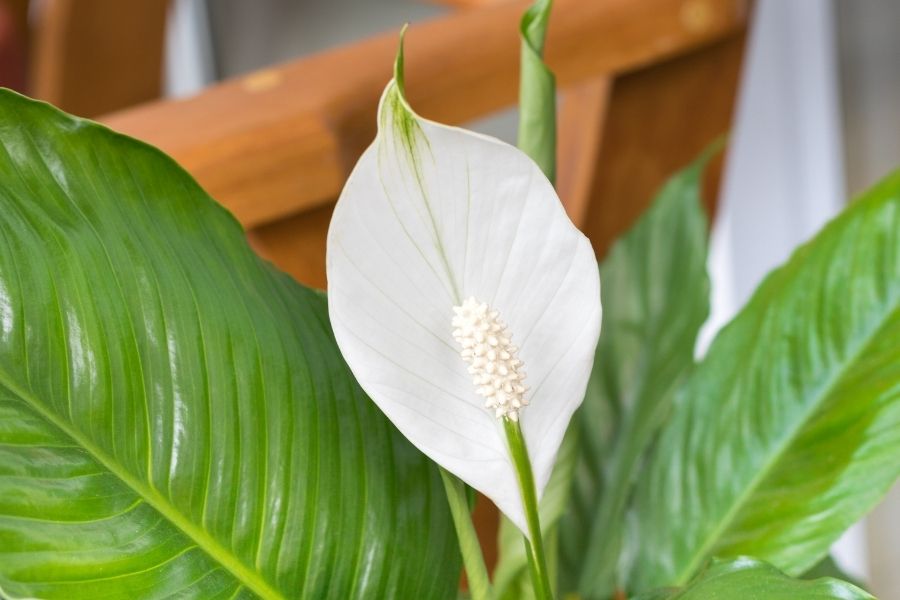Is it true that there are lucky plants? Because many people associate good fortune with money, many so-called lucky indoor plants have roundish leaves that resemble coins. Do they have the ability to offer you prosperity? Of course, that notion is simply superstition (I think) but it’s a fun idea.
Indoor greenery, on the other hand, has been shown to boost the health and happiness of those who live there. That may theoretically provide those individuals with enough energy to create their own luck. At the very least, it provides them with an excuse to expand their plant collection. And, because green is a lucky hue, practically all plants must be lucky! And, of course, plants are a great way to add some living, neutral and attractive visual interest to the decor scheme in any room in your home.
Whether you really believe plants can be lucky or not, here is a look at eight plants that have historically been considered lucky that would also look great in your home or office.
Chinese Money Plant
This lucky plant has leaves that are almost surreal in their roundness. Despite the fact that its coin-shaped leaves seem unlikely to earn you money, Chinese Money Plants are so gorgeous and easy to care for that you won’t mind. You can also “win friends and influence people” by taking cuttings from a lucky money plant and passing them on as gifts.
Why offer them as gifts?
The Chinese Money Planet – which is scientifically known as the pilea – is a native of China’s Yunnan province, which is in the southwest of the country. According to urban legend, Agnar Espegren, a Norwegian missionary, brought cuttings home with him from there in the 1940s and shared them with his friends and family. As people shared cuttings with others, those plants eventually grew throughout Scandinavia and the rest of the world.
So often the best strategy to acquire a Chinese money plant is to start with a friend in the majority of the world. It’s possible that they grow too slowly for nurseries to make enough money selling them and for that reason they aren’t offered in many plant nurseries or garden shops.
Your best option, if you can’t bribe a fellow plant enthusiast to share their luck is to purchase one from an online merchant on Amazon, eBay, Etsy, or Craigslist.
Desert Rose
The plumpness of the desert rose’s bulging trunk indicates financial abundance in feng shui. According to its Chinese name, the desert rose is thought to bring its possessor fortune (it’s name there is the fuguihua or wealth plant). The enlarged roots and basal stem signify fertility and abundance. It is thought that prosperity and riches it can grant increases proportionately to the size of the swelling base.
Furthermore, the plant produces stunning, brightly colored trumpet-shaped blooms and is gorgeous to behold when in full bloom.
Because this succulent species accumulates moisture in its huge “belly,” if it is overwatered, the plant will decay, demonstrating that abundance isn’t always a good thing! On the plus side, if you often forget to water houseplants, this pretty plant won’t suffer too much as a result of that oversight.
Jade Plant
Because of its link with the “blessed” stone of the same name, the jade plant obtained some of its reputation as a lucky plant in Asia, but in feng shui it is also considered to be a plant that can attract wealth. In Asia they are often placed at the entrance to a business to attract prosperity.
Like many lucky plants, this tree-like species has roundish leaves—succulent leaves in this case. It’s also simple to look after, accepting irregular watering and still remaining staying healthy, ensuring that your good fortune doesn’t dry up.
Jasmine
The heady perfume of jasmine lures people in for a closer look, and the jasmine plant’s lucky flowers—usually white and star-shaped—are said to attract love and money. Many people also suggest adding them to your bedroom to cleanse the air and improve your sleep quality.
Depending on the species, jasmine plant care can range from simple to difficult, so choose for the easiest varieties to grow for the best results (in blooms, that is, not beaus or bucks).
Lucky Bamboo
This feng shui staple lucky plant isn’t really a bamboo—which is associated with strength rather than luck in some cultures—but cane cuttings of a type of Dracaena, or “corn plant.” Apparently its resemblance to bamboo is enough to make it lucky, though. It’s sometimes sold growing in water rather than soil, and the type of good fortune it might bring you depends on how many stalks—rather than stocks—you buy.
Lucky Bean Plant
Probably deriving its “charmed” status from an association with the lucky beans from “Jack and the Beanstalk,” this plant grows from a large green seed lying atop the soil and nurtures the seedling with nutrients throughout its youth.
The plant and its polished pinnate foliage can reach a height of 6 feet when grown in a container, but don’t expect it to grow tall enough to reach any golden egg-laying geese!
Peace Lilly
Touted as a houseplant that improves indoor air quality, some claim that peace lilies clear air of negative energy and toxins, leaving a home, well, peaceful! Fortunately, peace lily care isn’t a fuss as it can tolerate fairly low light, though underwatering will cause it to yellow.
Ti Plant
Ti plants are commonly grown outside the doors of indigenous Pacific islanders to confer blessings on everyone who enter. Gardeners in colder climes like ours, on the other hand, should cultivate their ti plant inside. Within its stripy leaves, the plant can be completely green or streaked with tropical sunset colors like red, orange, or pink.
- Yes, You Can Have an Organized Home with Small Children - October 30, 2025
- Creating a Holiday Command Center: Festive Organization Made Easier - October 28, 2025
- Pro Organizer Tricks for Treating: Your Ultimate Halloween Night Strategy - October 23, 2025














